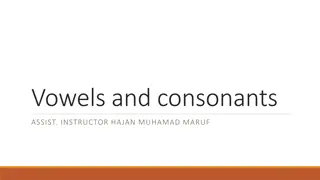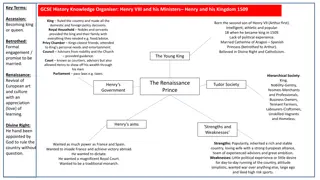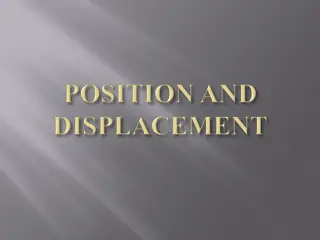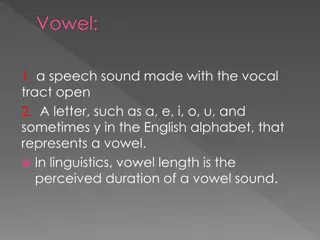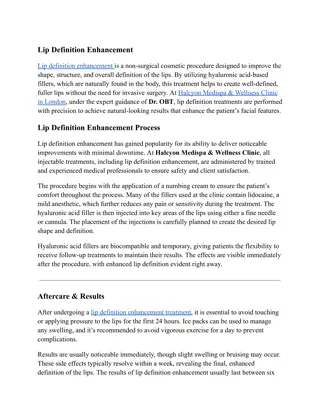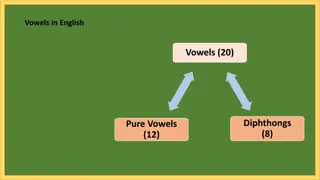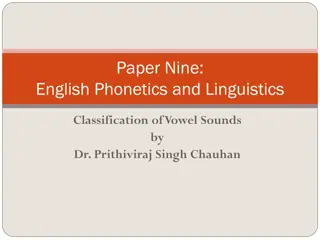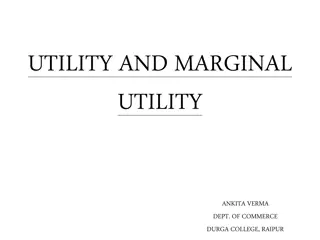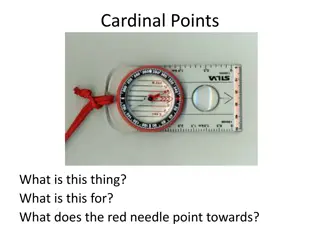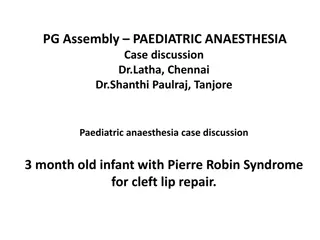Cardinal Vowels: Definition and Lip Position
Cardinal vowels in English phonetics and phonology, including primary and secondary cardinal vowels, their symbols, definitions, and lip positions. Learn about English short vowels and their relation to cardinal vowels.
Download Presentation

Please find below an Image/Link to download the presentation.
The content on the website is provided AS IS for your information and personal use only. It may not be sold, licensed, or shared on other websites without obtaining consent from the author.If you encounter any issues during the download, it is possible that the publisher has removed the file from their server.
You are allowed to download the files provided on this website for personal or commercial use, subject to the condition that they are used lawfully. All files are the property of their respective owners.
The content on the website is provided AS IS for your information and personal use only. It may not be sold, licensed, or shared on other websites without obtaining consent from the author.
E N D
Presentation Transcript
Unit 2 Part2 from English Phonetics and Phonology by Peter Roach Week 2 Maram Alabdulaaly
Cardinal vowels Cardinal vowels The vowels in Fig. 4 are the so- called primary cardinal vowels; these are the vowels that are most familiar to the speakers of most European languages, and there are other cardinal vowels (secondary cardinal vowels) that sound less familiar. In this course cardinal vowels are printed within square brackets [ ] to distinguish them clearly from English vowel sounds.
Cardinal vowels Cardinal vowels Cardinal Vowel no. 1 has the symbol [i], and is defined as the vowel which is as close and as front as it is possible to make a vowel without obstructing the flow of air enough to produce friction noise; friction noise is the hissing sound that one hears in consonants like s or f. Cardinal vowel no. 5 has the symbol [ ] and is defined as the most open and back vowel that it is possible to make. Cardinal vowel no. 8 [u] is fully close and back and no. 4 [a] is fully open and front.
Cardinal vowels Cardinal vowels There is another important variable of vowel quality, and that is lip- position. Although the lips can have many different shapes and positions, we will at this stage consider only three possibilities. These are: i) Rounded, where the corners of the lips are brought towards each other and the lips pushed forwards. This is most clearly seen in cardinal vowel no. 8 [u]. ii) Spread, with the corners of the lips moved away from each other, as for a smile. This is most clearly seen in cardinal vowel no. 1 [i]. iii) Neutral, where the lips are not noticeably rounded or spread. The noise most English people make when they are hesitating (written er ) has neutral lip position.
English short vowels English has a large number of vowel sounds; the first ones to be examined are short vowels. The symbols for these short vowels are. Short vowels are only relatively short; as we shall see later, vowels can have quite different lengths in different contexts. Each vowel is described in relation to the cardinal vowels.


